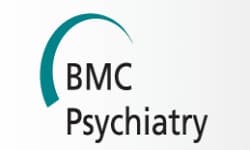 “Recent changes to the legal status of marijuana in Canada warrant a review of the information that patients and families are accessing online regarding the role of cannabis in cancer.
“Recent changes to the legal status of marijuana in Canada warrant a review of the information that patients and families are accessing online regarding the role of cannabis in cancer.
The aims of the current research were to identify the quality of literature available online as well as the themes, and opinion (i.e., pro-, neutral, or anti-cannabis) of online articles.
RESULTS:
We found most articles were authored by journalists (39.4%) and MDs (14.1%) and published as news (35.2%) or web articles (28.2%). The content of articles focused on four themes: the reasons for and against cannabis use; the opinions of health care providers; the restrictions placed by governing bodies and the need for additional research, education, and standardization. Article opinions were neutral-pro-cannabis.
CONCLUSIONS:
Health care providers should be aware that the overall quality of information found online is considered “satisfactory.” The majority of articles present a pro-cannabis opinion.”
https://www.ncbi.nlm.nih.gov/pubmed/31960125
https://link.springer.com/article/10.1007%2Fs00520-020-05306-2

 “Epilepsy is a neurological disorder characterized by the presence of seizures and neuropsychiatric comorbidities. Despite the number of antiepileptic drugs, one-third of patients did not have their seizures under control, leading to pharmacoresistance epilepsy.
“Epilepsy is a neurological disorder characterized by the presence of seizures and neuropsychiatric comorbidities. Despite the number of antiepileptic drugs, one-third of patients did not have their seizures under control, leading to pharmacoresistance epilepsy. “Osteoarticular equine disease is a common cause of malady; in general, its therapy is supported on steroids and nonsteroidal anti-inflammatories. Nevertheless, many side effects may develop when these drugs are administered. Nowadays, the use of new alternatives for this pathology attention is demanded; in that sense,
“Osteoarticular equine disease is a common cause of malady; in general, its therapy is supported on steroids and nonsteroidal anti-inflammatories. Nevertheless, many side effects may develop when these drugs are administered. Nowadays, the use of new alternatives for this pathology attention is demanded; in that sense,  “Medicinal cannabis has received increased research attention over recent years due to loosening global regulatory changes.
“Medicinal cannabis has received increased research attention over recent years due to loosening global regulatory changes. “Cannabis sativa L. is an ancient medicinal plant wherefrom over 120 cannabinoids are extracted. In the past two decades, there has been increasing interest in the therapeutic potential of cannabis-based treatments for neurological disorders such as epilepsy, and there is now evidence for the medical use of cannabis and its effectiveness for a wide range of diseases.
“Cannabis sativa L. is an ancient medicinal plant wherefrom over 120 cannabinoids are extracted. In the past two decades, there has been increasing interest in the therapeutic potential of cannabis-based treatments for neurological disorders such as epilepsy, and there is now evidence for the medical use of cannabis and its effectiveness for a wide range of diseases. “To determine if cannabis may be used as an alternative or adjunct treatment for intermittent and chronic prescription opioid users.
“To determine if cannabis may be used as an alternative or adjunct treatment for intermittent and chronic prescription opioid users. “There is growing recognition of the potential utility of medical cannabis as a harm reduction intervention.
“There is growing recognition of the potential utility of medical cannabis as a harm reduction intervention.

 “Neurofibromatosis type 1 (NF1) is a common genetic disorder. Pain is a major symptom of this disease which can be secondary to the development of plexiform and subcutaneous neurofibromas, musculoskeletal symptoms (such as scoliosis and pseudoarthrosis), and headaches. Visible neurofibromas add significant psychosocial distress for NF1 patients. Along with the chronic pain, psychosocial distress contributes to associated mood disorders, such as depression and anxiety.
“Neurofibromatosis type 1 (NF1) is a common genetic disorder. Pain is a major symptom of this disease which can be secondary to the development of plexiform and subcutaneous neurofibromas, musculoskeletal symptoms (such as scoliosis and pseudoarthrosis), and headaches. Visible neurofibromas add significant psychosocial distress for NF1 patients. Along with the chronic pain, psychosocial distress contributes to associated mood disorders, such as depression and anxiety.